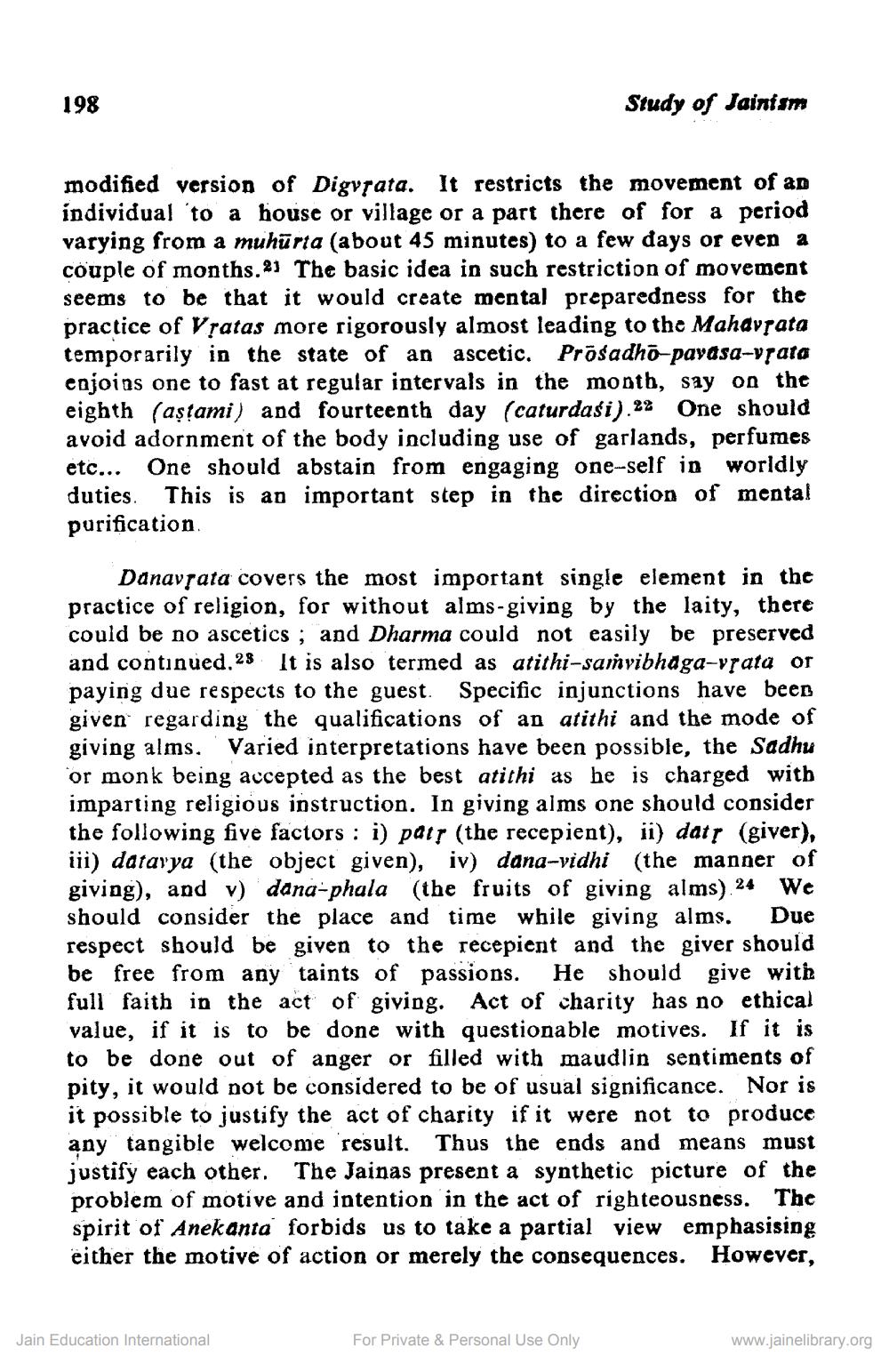________________
198
modified version of Digvrata. It restricts the movement of an individual to a house or village or a part there of for a period varying from a muhurta (about 45 minutes) to a few days or even a couple of months.21 The basic idea in such restriction of movement seems to be that it would create mental preparedness for the practice of Vratas more rigorously almost leading to the Mahavṛata temporarily in the state of an ascetic. Prōsadhō-pavasa-vṛata enjoins one to fast at regular intervals in the month, say on the eighth (aṣṭami) and fourteenth day (caturdasi).22 One should avoid adornment of the body including use of garlands, perfumes etc... One should abstain from engaging one-self in worldly duties. This is an important step in the direction of mental purification.
Study of Jainism
Danavrata covers the most important single element in the practice of religion, for without alms-giving by the laity, there could be no ascetics; and Dharma could not easily be preserved and continued. 28 It is also termed as atithi-saṁvibhāga-vṛata or paying due respects to the guest. Specific injunctions have been given regarding the qualifications of an atithi and the mode of giving alms. Varied interpretations have been possible, the Sadhu or monk being accepted as the best atithi as he is charged with imparting religious instruction. In giving alms one should consider the following five factors: i) patr (the recepient), ii) datṛ (giver), iii) datarya (the object given), iv) dana-vidhi (the manner of giving), and v) dana-phala (the fruits of giving alms) 24 We should consider the place and time while giving alms. Due respect should be given to the recepient and the giver should be free from any taints of passions. He should give with full faith in the act of giving. Act of charity has no ethical value, if it is to be done with questionable motives. If it is to be done out of anger or filled with maudlin sentiments of pity, it would not be considered to be of usual significance. Nor is it possible to justify the act of charity if it were not to produce any tangible welcome result. Thus the ends and means must justify each other. The Jainas present a synthetic picture of the problem of motive and intention in the act of righteousness. The spirit of Anekanta forbids us to take a partial view emphasising either the motive of action or merely the consequences. However,
Jain Education International
For Private & Personal Use Only
www.jainelibrary.org




